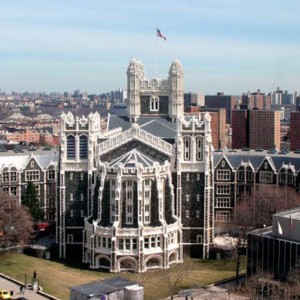by Robert E. Wright
The Case for Slavery Reparations Rests on a False Assumption
Teaser: The assumption is that slavery enriched the country. It actually impoverished America.
Robert E. Wright, the Nef Family Chair of Political Economy at Augustana University, is the author of The Poverty of Slavery: How Unfree Labor Pollutes the Economy.
Horses numbering some 6.2 million. Over 1.1 million asses and
mules and 2.2 million oxen. Over 8.5 million milch cows and 14.7 million other head
of cattle. Almost 21.6 million sheep and 33.5 million hogs. Some 163 million
acres under the plow. Farming implements and machines worth $245 million.
Almost $98.6 million worth of cotton manufacturing equipment, $31 million of
woollen manufacturing equipment, $23.4 million in boot and shoe manufacturing
equipment, and many more millions, in sum, invested in scores of other types of
manufacturing industries. Workers numbering 11.1 million, of whom almost 2.34
million were enslaved. All were important factors in an economy that
created $4.4 billion of final goods in 1860 ($88.7 billion in today’s dollars).*
None of those classical factors of production (land, labor, and
capital),** however, rightly could be said to have caused the creation
of those final goods. Businesses (ranging from sole proprietorships to publicly
traded corporations) cleared land, acquired or created capital, and hired or
enslaved laborers for the purpose of creating goods that they hoped to sell for
a profit. The expectation of profit was what caused production.
Businesses expected a chance to earn a profit because the American government
had credibly committed to protecting the lives, liberty, and property of
business owners. Alexander Hamilton correctly averred that economies grow and
development when governments successfully protect property from threats both
foreign and domestic. The factors of production delineated above were not
unimportant but they were, ultimately, effects rather than causes.
In recent years, several scholars have tried to raise one of those
effects, slaves, into a, if not the, cause of economic growth in
the United States and the United Kingdom. Economist historians have criticized
many of the more technical aspects of that attempt, especially the claim that
cotton productivity grew in the late antebellum decades mainly because masters
learned how to force slaves to work harder. Alan Olmstead and Paul Rhode, for
example, have convincingly countered that new strains of cotton were easier to
pick and produced higher yields.
Neo-abolitionist scholars are also uneasy with the claim, not
heard since the proslavery rantings of people like George Fitzhugh, that
slavery can induce economic growth. Such claims, unsubstantiated as they are,
undermine the efforts of NGOs like Free the Slaves to reduce the number of
people forced to labor today, which most estimates place at above 30 million.
My view, detailed in The Poverty of Slavery: How Unfree Labor
Pollutes the Economy, is that slaves are the least likely candidate to be,
or to have been, a growth driver. As hinted by the subtitle, the book shows
that slavery creates negative externalities that swamp the marginal benefits of
slave labor by several orders of magnitude. Negative externalities are costs
not borne by participants in a given market (buyers or sellers). The prime
textbook example of a negative externality is pollution: factory owners (and
their customers) benefit from spewing pollutants into the environment but that
injures everyone else so, hopefully, the government imposes regulations to stop
or tax it.
Slavery was (and remains) no different. Enslavers do everything in
their power to get society to pay for the high costs of controlling their human
minions, very few of whom want to be enslaved. Throughout history, including
the U.S. antebellum South, enslavers have used taxpayer monies to discipline
their slaves, put down rebellions, return runaways, and so forth. They
distorted republican governance processes to further their ends and
deliberately stymied economic development (literacy, communications,
transportation infrastructure, etc.).
In the process, enslavers profited and became wealthy. But the
profits they generated were not much higher than they would have earned using
the next most profitable type of labor. So the marginal benefit of slavery was
small, while its aggregate cost was enormous. The conclusion is inevitable:
while slaves were important, the U.S. South and every other slave
society throughout history would have created more output without slavery. In
addition to being immoral, slavery created poverty, not wealth, and for both
reasons should be extirpated from the globe once and for all.
This conclusion leaves little room for scholars who would like to
see reparations paid to African-Americans descended from slaves. That effort is on shaky moral ground anyway because
slavery was a ubiquitous institution throughout most of human existence, so nary
a person alive today, regardless of the complexion of his or her skin, is not
descended from at least one slave and at least one slaveholder. The best case
for reparations, therefore, lay not in old forms of slavery but in forced labor
today, particularly the millions of living victims of America’s overgrown carceral
state.
*All figures are from the 1860 U.S. Census except for GDP, which is
from MeasuringWorth.com, and the number of total and enslaved workers, which is
from Stanley Lebergott, “Labor Force and Employment, 1800-1960,” in Dorothy
Brady, ed. Output, Employment, and Productivity in the United States After
1800 [NBER, 1966], Table 1.
**https://en.wikipedia.org/wiki/Factors_of_production
by Robert E. Wright
This
conclusion leaves little room for scholars who would like to see
reparations paid to African-Americans descended from slaves. That
effort is on shaky moral ground anyway because slavery was a
ubiquitous institution throughout most of human existence, so nary a
person alive today, regardless of the complexion of his or her skin,
is not descended from at least one slave and at least one
slaveholder. The best case for reparations, therefore, lay not in old
forms of slavery but in forced labor today, particularly the millions
of living victims of America’s overgrown carceral state.
*All figures are from the 1860 U.S. Census except for GDP, which is from MeasuringWorth.com, and the number of total and enslaved workers, which is from Stanley Lebergott, “Labor Force and Employment, 1800-1960,” in Dorothy Brady, ed. Output, Employment, and Productivity in the United States After 1800 [NBER, 1966], Table 1.
- See more at: http://historynewsnetwork.org/article/165483#sthash.ve8XTYkk.dpuf
*All figures are from the 1860 U.S. Census except for GDP, which is from MeasuringWorth.com, and the number of total and enslaved workers, which is from Stanley Lebergott, “Labor Force and Employment, 1800-1960,” in Dorothy Brady, ed. Output, Employment, and Productivity in the United States After 1800 [NBER, 1966], Table 1.
- See more at: http://historynewsnetwork.org/article/165483#sthash.ve8XTYkk.dpuf
Horses
numbering some 6.2 million. Over 1.1 million asses and mules and 2.2
million oxen. Over 8.5 million milch cows and 14.7 million other head
of cattle. Almost 21.6 million sheep and 33.5 million hogs. Some 163
million acres under the plow. Farming implements and machines worth
$245 million. Almost $98.6 million worth of cotton manufacturing
equipment, $31 million of woollen manufacturing equipment, $23.4
million in boot and shoe manufacturing equipment, and many more
millions, in sum, invested in scores of other types of manufacturing
industries. Workers numbering 11.1 million, of whom almost 2.34
million were enslaved. All were important
factors in an economy that created $4.4 billion of final goods in
1860 ($88.7 billion in today’s dollars).*
 None
of those classical factors
of production
(land, labor, and capital), however, rightly could be said to have
caused
the creation of those final goods. Businesses (ranging from sole
proprietorships to publicly traded corporations) cleared land,
acquired or created capital, and hired or enslaved laborers for the
purpose of creating goods that they hoped to sell for a profit. The
expectation of profit was what caused
production.
Businesses expected a chance to earn a profit because the American
government had credibly committed to protecting the lives, liberty,
and property of business owners. Alexander Hamilton correctly averred
that economies grow and development when governments successfully
protect property from threats both foreign and domestic. The factors
of production delineated above were not unimportant but they were,
ultimately, effects rather than causes.
None
of those classical factors
of production
(land, labor, and capital), however, rightly could be said to have
caused
the creation of those final goods. Businesses (ranging from sole
proprietorships to publicly traded corporations) cleared land,
acquired or created capital, and hired or enslaved laborers for the
purpose of creating goods that they hoped to sell for a profit. The
expectation of profit was what caused
production.
Businesses expected a chance to earn a profit because the American
government had credibly committed to protecting the lives, liberty,
and property of business owners. Alexander Hamilton correctly averred
that economies grow and development when governments successfully
protect property from threats both foreign and domestic. The factors
of production delineated above were not unimportant but they were,
ultimately, effects rather than causes.
In recent years, several scholars have tried to raise one of those effects, slaves, into a, if not the, cause of economic growth in the United States and the United Kingdom. Economist historians have criticized many of the more technical aspects of that attempt, especially the claim that cotton productivity grew in the late antebellum decades mainly because masters learned how to force slaves to work harder. Alan Olmstead and Paul Rhode, for example, have convincingly countered that new strains of cotton were easier to pick and produced higher yields.
Neo-abolitionist scholars are also uneasy with the claim, not heard since the proslavery rantings of people like George Fitzhugh, that slavery can induce economic growth. Such claims, unsubstantiated as they are, undermine the efforts of NGOs like Free the Slaves to reduce the number of people forced to labor today, which most estimates place at above 30 million.
My view, detailed in The Poverty of Slavery: How Unfree Labor Pollutes the Economy, is that slaves are the least likely factor in the growth of the economy. As hinted by the subtitle, the book shows that slavery creates negative externalities that swamp the marginal benefits of slave labor by several orders of magnitude. Negative externalities are costs not borne by participants in a given market. The prime textbook example of a negative externality is pollution: factory owners (and their customers) benefit from spewing pollutants into the environment but that harms everyone else so, hopefully, the government imposes regulations to stop or tax it.
Slavery was (and remains) no different. Enslavers do everything in their power to get society to pay for the high costs of controlling their human minions. Throughout history, including the U.S. antebellum South, enslavers used taxpayer monies to discipline their slaves, put down rebellions, return runaways, and so forth. They distorted republican governance processes to further their ends and deliberately stymied economic development (literacy, communications, transportation infrastructure, etc.).
In the process, enslavers profited and became wealthy. But the profits they generated were not much higher than they would have earned using the next most profitable type of labor. So the marginal benefit of slavery was small, while its aggregate cost was enormous. The conclusion is inevitable: while slaves were important, the U.S. South and every other slave society throughout history would have created more output without slavery. In addition to being immoral, slavery created poverty, not wealth, and for both reasons should be extirpated from the globe once and for all.
This conclusion leaves little room for scholars who would like to see reparations paid to African-Americans descended from slaves. That effort is on shaky moral ground anyway because slavery was a ubiquitous institution throughout most of human existence, so nary a person alive today, regardless of the complexion of his or her skin, is not descended from at least one slave and at least one slaveholder. The best case for reparations, therefore, lay not in old forms of slavery but in forced labor today, particularly the millions of living victims of America’s overgrown carceral state.
*All figures are from the 1860 U.S. Census except for GDP, which is from MeasuringWorth.com, and the number of total and enslaved workers, which is from Stanley Lebergott, “Labor Force and Employment, 1800-1960,” in Dorothy Brady, ed. Output, Employment, and Productivity in the United States After 1800 [NBER, 1966], Table 1.
- See more at: http://historynewsnetwork.org/article/165483#sthash.ve8XTYkk.dpuf
 None
of those classical factors
of production
(land, labor, and capital), however, rightly could be said to have
caused
the creation of those final goods. Businesses (ranging from sole
proprietorships to publicly traded corporations) cleared land,
acquired or created capital, and hired or enslaved laborers for the
purpose of creating goods that they hoped to sell for a profit. The
expectation of profit was what caused
production.
Businesses expected a chance to earn a profit because the American
government had credibly committed to protecting the lives, liberty,
and property of business owners. Alexander Hamilton correctly averred
that economies grow and development when governments successfully
protect property from threats both foreign and domestic. The factors
of production delineated above were not unimportant but they were,
ultimately, effects rather than causes.
None
of those classical factors
of production
(land, labor, and capital), however, rightly could be said to have
caused
the creation of those final goods. Businesses (ranging from sole
proprietorships to publicly traded corporations) cleared land,
acquired or created capital, and hired or enslaved laborers for the
purpose of creating goods that they hoped to sell for a profit. The
expectation of profit was what caused
production.
Businesses expected a chance to earn a profit because the American
government had credibly committed to protecting the lives, liberty,
and property of business owners. Alexander Hamilton correctly averred
that economies grow and development when governments successfully
protect property from threats both foreign and domestic. The factors
of production delineated above were not unimportant but they were,
ultimately, effects rather than causes.In recent years, several scholars have tried to raise one of those effects, slaves, into a, if not the, cause of economic growth in the United States and the United Kingdom. Economist historians have criticized many of the more technical aspects of that attempt, especially the claim that cotton productivity grew in the late antebellum decades mainly because masters learned how to force slaves to work harder. Alan Olmstead and Paul Rhode, for example, have convincingly countered that new strains of cotton were easier to pick and produced higher yields.
Neo-abolitionist scholars are also uneasy with the claim, not heard since the proslavery rantings of people like George Fitzhugh, that slavery can induce economic growth. Such claims, unsubstantiated as they are, undermine the efforts of NGOs like Free the Slaves to reduce the number of people forced to labor today, which most estimates place at above 30 million.
My view, detailed in The Poverty of Slavery: How Unfree Labor Pollutes the Economy, is that slaves are the least likely factor in the growth of the economy. As hinted by the subtitle, the book shows that slavery creates negative externalities that swamp the marginal benefits of slave labor by several orders of magnitude. Negative externalities are costs not borne by participants in a given market. The prime textbook example of a negative externality is pollution: factory owners (and their customers) benefit from spewing pollutants into the environment but that harms everyone else so, hopefully, the government imposes regulations to stop or tax it.
Slavery was (and remains) no different. Enslavers do everything in their power to get society to pay for the high costs of controlling their human minions. Throughout history, including the U.S. antebellum South, enslavers used taxpayer monies to discipline their slaves, put down rebellions, return runaways, and so forth. They distorted republican governance processes to further their ends and deliberately stymied economic development (literacy, communications, transportation infrastructure, etc.).
In the process, enslavers profited and became wealthy. But the profits they generated were not much higher than they would have earned using the next most profitable type of labor. So the marginal benefit of slavery was small, while its aggregate cost was enormous. The conclusion is inevitable: while slaves were important, the U.S. South and every other slave society throughout history would have created more output without slavery. In addition to being immoral, slavery created poverty, not wealth, and for both reasons should be extirpated from the globe once and for all.
This conclusion leaves little room for scholars who would like to see reparations paid to African-Americans descended from slaves. That effort is on shaky moral ground anyway because slavery was a ubiquitous institution throughout most of human existence, so nary a person alive today, regardless of the complexion of his or her skin, is not descended from at least one slave and at least one slaveholder. The best case for reparations, therefore, lay not in old forms of slavery but in forced labor today, particularly the millions of living victims of America’s overgrown carceral state.
*All figures are from the 1860 U.S. Census except for GDP, which is from MeasuringWorth.com, and the number of total and enslaved workers, which is from Stanley Lebergott, “Labor Force and Employment, 1800-1960,” in Dorothy Brady, ed. Output, Employment, and Productivity in the United States After 1800 [NBER, 1966], Table 1.
- See more at: http://historynewsnetwork.org/article/165483#sthash.ve8XTYkk.dpuf
Robert
E. Wright, the Nef Family Chair of Political Economy at Augustana
University, is the author of The
Poverty of Slavery: How Unfree Labor Pollutes the Economy.
 Horses
numbering some 6.2 million. Over 1.1 million asses and mules and 2.2
million oxen. Over 8.5 million milch cows and 14.7 million other head
of cattle. Almost 21.6 million sheep and 33.5 million hogs. Some 163
million acres under the plow. Farming implements and machines worth
$245 million. Almost $98.6 million worth of cotton manufacturing
equipment, $31 million of woollen manufacturing equipment, $23.4
million in boot and shoe manufacturing equipment, and many more
millions, in sum, invested in scores of other types of manufacturing
industries. Workers numbering 11.1 million, of whom almost 2.34
million were enslaved. All were important
factors in an economy that created $4.4 billion of final goods in
1860 ($88.7 billion in today’s dollars).*
Horses
numbering some 6.2 million. Over 1.1 million asses and mules and 2.2
million oxen. Over 8.5 million milch cows and 14.7 million other head
of cattle. Almost 21.6 million sheep and 33.5 million hogs. Some 163
million acres under the plow. Farming implements and machines worth
$245 million. Almost $98.6 million worth of cotton manufacturing
equipment, $31 million of woollen manufacturing equipment, $23.4
million in boot and shoe manufacturing equipment, and many more
millions, in sum, invested in scores of other types of manufacturing
industries. Workers numbering 11.1 million, of whom almost 2.34
million were enslaved. All were important
factors in an economy that created $4.4 billion of final goods in
1860 ($88.7 billion in today’s dollars).*
 None
of those classical factors
of production
(land, labor, and capital), however, rightly could be said to have
caused
the creation of those final goods. Businesses (ranging from sole
proprietorships to publicly traded corporations) cleared land,
acquired or created capital, and hired or enslaved laborers for the
purpose of creating goods that they hoped to sell for a profit. The
expectation of profit was what caused
production.
Businesses expected a chance to earn a profit because the American
government had credibly committed to protecting the lives, liberty,
and property of business owners. Alexander Hamilton correctly averred
that economies grow and development when governments successfully
protect property from threats both foreign and domestic. The factors
of production delineated above were not unimportant but they were,
ultimately, effects rather than causes.
None
of those classical factors
of production
(land, labor, and capital), however, rightly could be said to have
caused
the creation of those final goods. Businesses (ranging from sole
proprietorships to publicly traded corporations) cleared land,
acquired or created capital, and hired or enslaved laborers for the
purpose of creating goods that they hoped to sell for a profit. The
expectation of profit was what caused
production.
Businesses expected a chance to earn a profit because the American
government had credibly committed to protecting the lives, liberty,
and property of business owners. Alexander Hamilton correctly averred
that economies grow and development when governments successfully
protect property from threats both foreign and domestic. The factors
of production delineated above were not unimportant but they were,
ultimately, effects rather than causes.
In recent years, several scholars have tried to raise one of those effects, slaves, into a, if not the, cause of economic growth in the United States and the United Kingdom. Economist historians have criticized many of the more technical aspects of that attempt, especially the claim that cotton productivity grew in the late antebellum decades mainly because masters learned how to force slaves to work harder. Alan Olmstead and Paul Rhode, for example, have convincingly countered that new strains of cotton were easier to pick and produced higher yields.
Neo-abolitionist scholars are also uneasy with the claim, not heard since the proslavery rantings of people like George Fitzhugh, that slavery can induce economic growth. Such claims, unsubstantiated as they are, undermine the efforts of NGOs like Free the Slaves to reduce the number of people forced to labor today, which most estimates place at above 30 million.
My view, detailed in The Poverty of Slavery: How Unfree Labor Pollutes the Economy, is that slaves are the least likely factor in the growth of the economy. As hinted by the subtitle, the book shows that slavery creates negative externalities that swamp the marginal benefits of slave labor by several orders of magnitude. Negative externalities are costs not borne by participants in a given market. The prime textbook example of a negative externality is pollution: factory owners (and their customers) benefit from spewing pollutants into the environment but that harms everyone else so, hopefully, the government imposes regulations to stop or tax it.
Slavery was (and remains) no different. Enslavers do everything in their power to get society to pay for the high costs of controlling their human minions. Throughout history, including the U.S. antebellum South, enslavers used taxpayer monies to discipline their slaves, put down rebellions, return runaways, and so forth. They distorted republican governance processes to further their ends and deliberately stymied economic development (literacy, communications, transportation infrastructure, etc.).
In the process, enslavers profited and became wealthy. But the profits they generated were not much higher than they would have earned using the next most profitable type of labor. So the marginal benefit of slavery was small, while its aggregate cost was enormous. The conclusion is inevitable: while slaves were important, the U.S. South and every other slave society throughout history would have created more output without slavery. In addition to being immoral, slavery created poverty, not wealth, and for both reasons should be extirpated from the globe once and for all.
This conclusion leaves little room for scholars who would like to see reparations paid to African-Americans descended from slaves. That effort is on shaky moral ground anyway because slavery was a ubiquitous institution throughout most of human existence, so nary a person alive today, regardless of the complexion of his or her skin, is not descended from at least one slave and at least one slaveholder. The best case for reparations, therefore, lay not in old forms of slavery but in forced labor today, particularly the millions of living victims of America’s overgrown carceral state.
*All figures are from the 1860 U.S. Census except for GDP, which is from MeasuringWorth.com, and the number of total and enslaved workers, which is from Stanley Lebergott, “Labor Force and Employment, 1800-1960,” in Dorothy Brady, ed. Output, Employment, and Productivity in the United States After 1800 [NBER, 1966], Table 1.

 None
of those classical factors
of production
(land, labor, and capital), however, rightly could be said to have
caused
the creation of those final goods. Businesses (ranging from sole
proprietorships to publicly traded corporations) cleared land,
acquired or created capital, and hired or enslaved laborers for the
purpose of creating goods that they hoped to sell for a profit. The
expectation of profit was what caused
production.
Businesses expected a chance to earn a profit because the American
government had credibly committed to protecting the lives, liberty,
and property of business owners. Alexander Hamilton correctly averred
that economies grow and development when governments successfully
protect property from threats both foreign and domestic. The factors
of production delineated above were not unimportant but they were,
ultimately, effects rather than causes.
None
of those classical factors
of production
(land, labor, and capital), however, rightly could be said to have
caused
the creation of those final goods. Businesses (ranging from sole
proprietorships to publicly traded corporations) cleared land,
acquired or created capital, and hired or enslaved laborers for the
purpose of creating goods that they hoped to sell for a profit. The
expectation of profit was what caused
production.
Businesses expected a chance to earn a profit because the American
government had credibly committed to protecting the lives, liberty,
and property of business owners. Alexander Hamilton correctly averred
that economies grow and development when governments successfully
protect property from threats both foreign and domestic. The factors
of production delineated above were not unimportant but they were,
ultimately, effects rather than causes.In recent years, several scholars have tried to raise one of those effects, slaves, into a, if not the, cause of economic growth in the United States and the United Kingdom. Economist historians have criticized many of the more technical aspects of that attempt, especially the claim that cotton productivity grew in the late antebellum decades mainly because masters learned how to force slaves to work harder. Alan Olmstead and Paul Rhode, for example, have convincingly countered that new strains of cotton were easier to pick and produced higher yields.
Neo-abolitionist scholars are also uneasy with the claim, not heard since the proslavery rantings of people like George Fitzhugh, that slavery can induce economic growth. Such claims, unsubstantiated as they are, undermine the efforts of NGOs like Free the Slaves to reduce the number of people forced to labor today, which most estimates place at above 30 million.
My view, detailed in The Poverty of Slavery: How Unfree Labor Pollutes the Economy, is that slaves are the least likely factor in the growth of the economy. As hinted by the subtitle, the book shows that slavery creates negative externalities that swamp the marginal benefits of slave labor by several orders of magnitude. Negative externalities are costs not borne by participants in a given market. The prime textbook example of a negative externality is pollution: factory owners (and their customers) benefit from spewing pollutants into the environment but that harms everyone else so, hopefully, the government imposes regulations to stop or tax it.
Slavery was (and remains) no different. Enslavers do everything in their power to get society to pay for the high costs of controlling their human minions. Throughout history, including the U.S. antebellum South, enslavers used taxpayer monies to discipline their slaves, put down rebellions, return runaways, and so forth. They distorted republican governance processes to further their ends and deliberately stymied economic development (literacy, communications, transportation infrastructure, etc.).
In the process, enslavers profited and became wealthy. But the profits they generated were not much higher than they would have earned using the next most profitable type of labor. So the marginal benefit of slavery was small, while its aggregate cost was enormous. The conclusion is inevitable: while slaves were important, the U.S. South and every other slave society throughout history would have created more output without slavery. In addition to being immoral, slavery created poverty, not wealth, and for both reasons should be extirpated from the globe once and for all.
This conclusion leaves little room for scholars who would like to see reparations paid to African-Americans descended from slaves. That effort is on shaky moral ground anyway because slavery was a ubiquitous institution throughout most of human existence, so nary a person alive today, regardless of the complexion of his or her skin, is not descended from at least one slave and at least one slaveholder. The best case for reparations, therefore, lay not in old forms of slavery but in forced labor today, particularly the millions of living victims of America’s overgrown carceral state.
*All figures are from the 1860 U.S. Census except for GDP, which is from MeasuringWorth.com, and the number of total and enslaved workers, which is from Stanley Lebergott, “Labor Force and Employment, 1800-1960,” in Dorothy Brady, ed. Output, Employment, and Productivity in the United States After 1800 [NBER, 1966], Table 1.
News
- Did pictures in the news media just change U.S. policy in Syria?
- Newly declassified CIA materials reveal: Americans hardly knew any Israeli secrets
- Columnist upset with attempts to ban library books that deny the Holocaust
- Marine Le Pen sparks outrage over Holocaust comments
- Here’s what historians told Congress are the difficult issues Donald Trump and Xi Jinping have to work out
Trending Now
Horses
numbering some 6.2 million. Over 1.1 million asses and mules and 2.2
million oxen. Over 8.5 million milch cows and 14.7 million other head
of cattle. Almost 21.6 million sheep and 33.5 million hogs. Some 163
million acres under the plow. Farming implements and machines worth
$245 million. Almost $98.6 million worth of cotton manufacturing
equipment, $31 million of woollen manufacturing equipment, $23.4
million in boot and shoe manufacturing equipment, and many more
millions, in sum, invested in scores of other types of manufacturing
industries. Workers numbering 11.1 million, of whom almost 2.34
million were enslaved. All were important
factors in an economy that created $4.4 billion of final goods in
1860 ($88.7 billion in today’s dollars).*
 None
of those classical factors
of production
(land, labor, and capital), however, rightly could be said to have
caused
the creation of those final goods. Businesses (ranging from sole
proprietorships to publicly traded corporations) cleared land,
acquired or created capital, and hired or enslaved laborers for the
purpose of creating goods that they hoped to sell for a profit. The
expectation of profit was what caused
production.
Businesses expected a chance to earn a profit because the American
government had credibly committed to protecting the lives, liberty,
and property of business owners. Alexander Hamilton correctly averred
that economies grow and development when governments successfully
protect property from threats both foreign and domestic. The factors
of production delineated above were not unimportant but they were,
ultimately, effects rather than causes.
None
of those classical factors
of production
(land, labor, and capital), however, rightly could be said to have
caused
the creation of those final goods. Businesses (ranging from sole
proprietorships to publicly traded corporations) cleared land,
acquired or created capital, and hired or enslaved laborers for the
purpose of creating goods that they hoped to sell for a profit. The
expectation of profit was what caused
production.
Businesses expected a chance to earn a profit because the American
government had credibly committed to protecting the lives, liberty,
and property of business owners. Alexander Hamilton correctly averred
that economies grow and development when governments successfully
protect property from threats both foreign and domestic. The factors
of production delineated above were not unimportant but they were,
ultimately, effects rather than causes.
In recent years, several scholars have tried to raise one of those effects, slaves, into a, if not the, cause of economic growth in the United States and the United Kingdom. Economist historians have criticized many of the more technical aspects of that attempt, especially the claim that cotton productivity grew in the late antebellum decades mainly because masters learned how to force slaves to work harder. Alan Olmstead and Paul Rhode, for example, have convincingly countered that new strains of cotton were easier to pick and produced higher yields.
Neo-abolitionist scholars are also uneasy with the claim, not heard since the proslavery rantings of people like George Fitzhugh, that slavery can induce economic growth. Such claims, unsubstantiated as they are, undermine the efforts of NGOs like Free the Slaves to reduce the number of people forced to labor today, which most estimates place at above 30 million.
My view, detailed in The Poverty of Slavery: How Unfree Labor Pollutes the Economy, is that slaves are the least likely factor in the growth of the economy. As hinted by the subtitle, the book shows that slavery creates negative externalities that swamp the marginal benefits of slave labor by several orders of magnitude. Negative externalities are costs not borne by participants in a given market. The prime textbook example of a negative externality is pollution: factory owners (and their customers) benefit from spewing pollutants into the environment but that harms everyone else so, hopefully, the government imposes regulations to stop or tax it.
Slavery was (and remains) no different. Enslavers do everything in their power to get society to pay for the high costs of controlling their human minions. Throughout history, including the U.S. antebellum South, enslavers used taxpayer monies to discipline their slaves, put down rebellions, return runaways, and so forth. They distorted republican governance processes to further their ends and deliberately stymied economic development (literacy, communications, transportation infrastructure, etc.).
In the process, enslavers profited and became wealthy. But the profits they generated were not much higher than they would have earned using the next most profitable type of labor. So the marginal benefit of slavery was small, while its aggregate cost was enormous. The conclusion is inevitable: while slaves were important, the U.S. South and every other slave society throughout history would have created more output without slavery. In addition to being immoral, slavery created poverty, not wealth, and for both reasons should be extirpated from the globe once and for all.
This conclusion leaves little room for scholars who would like to see reparations paid to African-Americans descended from slaves. That effort is on shaky moral ground anyway because slavery was a ubiquitous institution throughout most of human existence, so nary a person alive today, regardless of the complexion of his or her skin, is not descended from at least one slave and at least one slaveholder. The best case for reparations, therefore, lay not in old forms of slavery but in forced labor today, particularly the millions of living victims of America’s overgrown carceral state.
*All figures are from the 1860 U.S. Census except for GDP, which is from MeasuringWorth.com, and the number of total and enslaved workers, which is from Stanley Lebergott, “Labor Force and Employment, 1800-1960,” in Dorothy Brady, ed. Output, Employment, and Productivity in the United States After 1800 [NBER, 1966], Table 1.
- See more at: http://historynewsnetwork.org/article/165483#sthash.ve8XTYkk.dpuf
 None
of those classical factors
of production
(land, labor, and capital), however, rightly could be said to have
caused
the creation of those final goods. Businesses (ranging from sole
proprietorships to publicly traded corporations) cleared land,
acquired or created capital, and hired or enslaved laborers for the
purpose of creating goods that they hoped to sell for a profit. The
expectation of profit was what caused
production.
Businesses expected a chance to earn a profit because the American
government had credibly committed to protecting the lives, liberty,
and property of business owners. Alexander Hamilton correctly averred
that economies grow and development when governments successfully
protect property from threats both foreign and domestic. The factors
of production delineated above were not unimportant but they were,
ultimately, effects rather than causes.
None
of those classical factors
of production
(land, labor, and capital), however, rightly could be said to have
caused
the creation of those final goods. Businesses (ranging from sole
proprietorships to publicly traded corporations) cleared land,
acquired or created capital, and hired or enslaved laborers for the
purpose of creating goods that they hoped to sell for a profit. The
expectation of profit was what caused
production.
Businesses expected a chance to earn a profit because the American
government had credibly committed to protecting the lives, liberty,
and property of business owners. Alexander Hamilton correctly averred
that economies grow and development when governments successfully
protect property from threats both foreign and domestic. The factors
of production delineated above were not unimportant but they were,
ultimately, effects rather than causes.In recent years, several scholars have tried to raise one of those effects, slaves, into a, if not the, cause of economic growth in the United States and the United Kingdom. Economist historians have criticized many of the more technical aspects of that attempt, especially the claim that cotton productivity grew in the late antebellum decades mainly because masters learned how to force slaves to work harder. Alan Olmstead and Paul Rhode, for example, have convincingly countered that new strains of cotton were easier to pick and produced higher yields.
Neo-abolitionist scholars are also uneasy with the claim, not heard since the proslavery rantings of people like George Fitzhugh, that slavery can induce economic growth. Such claims, unsubstantiated as they are, undermine the efforts of NGOs like Free the Slaves to reduce the number of people forced to labor today, which most estimates place at above 30 million.
My view, detailed in The Poverty of Slavery: How Unfree Labor Pollutes the Economy, is that slaves are the least likely factor in the growth of the economy. As hinted by the subtitle, the book shows that slavery creates negative externalities that swamp the marginal benefits of slave labor by several orders of magnitude. Negative externalities are costs not borne by participants in a given market. The prime textbook example of a negative externality is pollution: factory owners (and their customers) benefit from spewing pollutants into the environment but that harms everyone else so, hopefully, the government imposes regulations to stop or tax it.
Slavery was (and remains) no different. Enslavers do everything in their power to get society to pay for the high costs of controlling their human minions. Throughout history, including the U.S. antebellum South, enslavers used taxpayer monies to discipline their slaves, put down rebellions, return runaways, and so forth. They distorted republican governance processes to further their ends and deliberately stymied economic development (literacy, communications, transportation infrastructure, etc.).
In the process, enslavers profited and became wealthy. But the profits they generated were not much higher than they would have earned using the next most profitable type of labor. So the marginal benefit of slavery was small, while its aggregate cost was enormous. The conclusion is inevitable: while slaves were important, the U.S. South and every other slave society throughout history would have created more output without slavery. In addition to being immoral, slavery created poverty, not wealth, and for both reasons should be extirpated from the globe once and for all.
This conclusion leaves little room for scholars who would like to see reparations paid to African-Americans descended from slaves. That effort is on shaky moral ground anyway because slavery was a ubiquitous institution throughout most of human existence, so nary a person alive today, regardless of the complexion of his or her skin, is not descended from at least one slave and at least one slaveholder. The best case for reparations, therefore, lay not in old forms of slavery but in forced labor today, particularly the millions of living victims of America’s overgrown carceral state.
*All figures are from the 1860 U.S. Census except for GDP, which is from MeasuringWorth.com, and the number of total and enslaved workers, which is from Stanley Lebergott, “Labor Force and Employment, 1800-1960,” in Dorothy Brady, ed. Output, Employment, and Productivity in the United States After 1800 [NBER, 1966], Table 1.
- See more at: http://historynewsnetwork.org/article/165483#sthash.ve8XTYkk.dpuf
The
Case for Slavery Reparations Rests on a False Assumpt - See more at:
http://historynewsnetwork.org/article/165483#sthash.ve8XTYkk.dpuf
The
Case for Slavery Reparations Rests on a False Assumpt - See more at:
http://historynewsnetwork.org/article/165483#sthash.ve8XTYkk.dpuf
The
Case for Slavery Reparations Rests on a False Assumpt - See more at:
http://historynewsnetwork.org/article/165483#sthash.ve8XTYkk.dpuf












